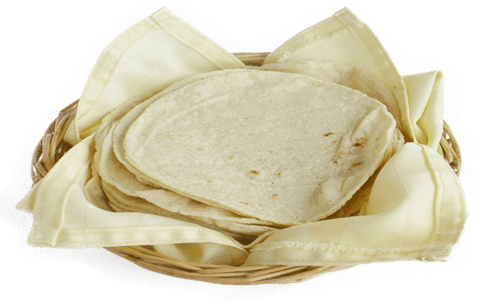


How to describe the tortilla? How does one capture the simplicity, grandeur and joy of this simple and extraordinary staple of cuisine both in Latin America and the world over? Fresh and familiar, versatile but reliable, contemporary yet timeless, the tortilla is a centerpiece of hundreds of dishes and practically all of Mexican cuisine. What bread is to the French, what potatoes were to the Irish, the tortilla is to Latin American (and more) food today.
The History of the Tortilla
Older than The Odyssey, older than the Bible, the tortilla traces its origins back to the domestication of corn eight thousand years ago in Mexico. The corn tortilla, it follows, was the first on the scene, and it is still considered the standard version among much of the American Southwest and in Mexico. The tortilla spread widely throughout Mexico following its origination, moving north and south from tribe to tribe as the continent became connected through the trade and of nomadic groups. For them, the tortilla was a daily necessity, providing a portable and easy form of nourishment.
By the 1500s, native Mexicans had already developed methods of refining corn for consumption. The recipe and method for making tortillas is little changed from this time. The essential remain today as they did six hundred years ago: granulated corn is shaped into circles that heated on a stone or griddle. The quality of these tortillas depended entirely on the quality of their few ingredients, so much so that different names were adopted to signify the hierarchy of tortilla quality. Noble Spaniards, for whom tortillas quickly became a staple after their arrival in Mexico, dined on the veiltexcalli, a large, thin tortilla, while the less fortunate ate the tlaxcalpacholli, a lower quality tortilla made from blue corn. Countless varieties supplemented these examples, depending of the purpose and meal the for which the tortilla was intended.
In Latin culture, the family matriarch took responsibility for making the day' s tortillas. The process could last for hours, requiring early rising and continuous labor to complete the needed tortillas for each day. Women also provided the labor to make tortillas on a commercial scale, until machinery and industrialization largely displaced them in the 1960s, disrupting a timeless aspect of Mexican culture.
Originally, natives referred to “tortillas” as tlaxcalli. The word “tortilla" descends from the Spanish word “torta," meaning a cake or patty. The word “torta" is still commonly used to distinguish the flat, salty bread known as a tortilla in South America from the many cakes that “torta" refers to. In Spain, a “tortilla" includes a concoction of eggs, onions, and potatoes mixed together and served as an appetizer. In most of the United States and particularly the Southwest, “tortilla" is understood to be a flat piece of cooked dough. Tortilla's first recorded reference in English dates to 1699, when it was described as “small cakes made of flower or Indian corn."2
About this Site
Why does this site exist? Why do you presume, anonymous narrator, to hold forth on the tortilla, to describe its grandeur and reveal its mysteries?
I am no guru, no great chef, no tortilla shaman claiming to make the best tortillas you've ever had. Don't get me wrong: I make a good tortilla, but I created this site not to boast but to share. A few years back, I began to reevaluate my relationship with food. The problem was simple: I didn't make much food. My lack of culinary adventuring led to a boring diet (take out, cans of soup) and subpar health (processed foods).
To remedy this, I started to cook. Gradually, I became pretty good, experimenting with several recipes.
My basic discovery was this: food tastes better when you make it. Not only does it taste better, it is better. Homemade food features fresher ingredients, fewer calories, and better quality than processed and prepacked food from supermarkets, and is substantially healthier than food from fast food or traditional restaurants.
The best part? If you love to eat, it's easy to cook.
Eventually, my hobby made it's way to tortillas. A longtime fan of Mexican and Latin food, I knew that homemade tortillas were a necessity. The road from my first feeble attempts to making consistently high-quality tortillas did not happen overnight: it took multiple attempts and a fair amount of practice to perfect both the corn and flour tortilla.
But, eventually, I got pretty good. And I'm here to tell you that you can get pretty good too. Once you've given it the first try, you'll find each successive attempt gets significantly easier.
First time tortilla maker? I recommend that you first attempt flour tortillas, which are much more forgiving than corn tortillas. Once you've got the hang of flour, give corn a try.